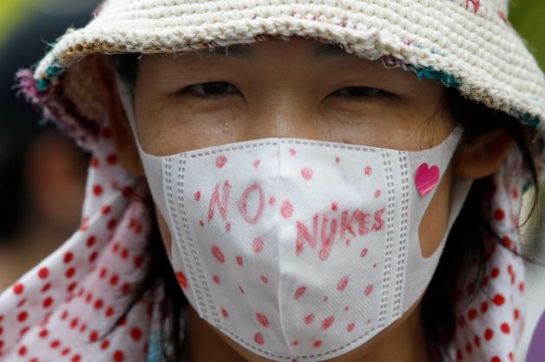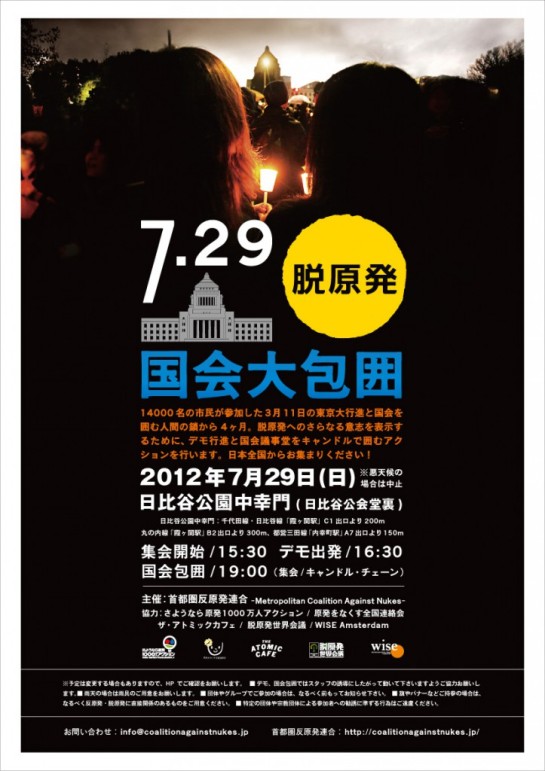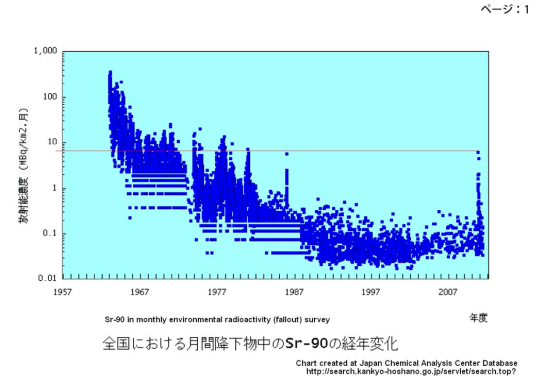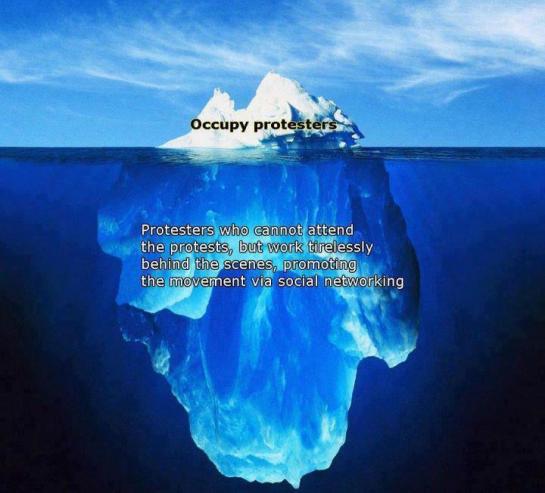Hontou ni okotteiru.
(They’re really angry.)
Yep. A Sunday evening. Most folks have to get to work early on Monday morning. You’d think they’d want to be home relaxing, watching the Olympics. Yet they turn out in droves to say no to nuclear power and nuclear plant restarts. They argue with the few politicians that came out to support them. They bring their children to this historic protest. They spill out into the streets, past the police, and surround the Diet building. Then, at 8:00 p.m., they disperse and go back home, quietly and peacefully.
Only in Japan.
The average person does not have guns. There is still a certain respect for life and honor of others (for the present, though even that has changed over the years) and, most importantly, a sincere desire to leave a better world, not one filled with radiation and sickness, for the children, not only of Japan, but worldwide.
= ~ = ~ = ~ = ~ = ~ = ~ = ~ = ~ = ~ = ~ = ~ = ~ =
Antinuclear protestors march through Tokyo, surround Diet building
Tens of thousands of angry citizens from all walks of life marched through Tokyo and surrounded the Diet building under scorching heat on July 29, demanding the government scrap its decision to reactivate nuclear reactors and break its dependence on nuclear power once and for all.
Article continues at:
http://mainichi.jp/english/english/newsselect/news/20120730p2a00m0na012000c.html
= ~ = ~ = ~ = ~ = ~ = ~ = ~ = ~ = ~ = ~ = ~ = ~ =
Recorded video of the protest at dusk from the helicopter above the Diet building…
http://www.ourplanet-tv.org/?q=node/1395
= ~ = ~ = ~ = ~ = ~ = ~ = ~ = ~ = ~ = ~ = ~ = ~ =
Nuclear power hard to justify in cheap gas world: GE
(Reuters) – Nuclear power has become hard to justify as the shale gas revolution creates an abundance of natural gas that makes it the fuel of choice to back up renewables, the chief executive of General Electric told the Financial Times on Monday.
A sharp rise in shale gas production in North America in the past five years has pulled U.S. natural gas prices down close to 10-year lows and could turn the country into a gas exporter soon.
Large conventional offshore gas findings in Europe and Africa in the past two years, vast existing reserves in Russia and Central Asia and increasing production inAustralia also mean gas is abundant elsewhere as well.
At the same time, nuclear power has come under pressure following the meltdown at Japan’s Fukushima reactor during the March 2011 earthquake and tsunami, with countries such as Germany and Switzerland pulling out of nuclear power generation.
“They’re finding more gas all the time. It’s just hard to justify nuclear. Gas is so cheap and at some point, economics rule,” the newspaper quoted GE CEO Jeff Immelt as saying in an interview on Monday.
Article continues at:
http://www.reuters.com/article/2012/07/30/us-energy-power-nuclear-shale-idUSBRE86T0AX20120730
= ~ = ~ = ~ = ~ = ~ = ~ = ~ = ~ = ~ = ~ = ~ = ~ =
Construction of tsunami defenses delayed at Hamaoka nuke plant
http://mainichi.jp/english/english/newsselect/news/20120731p2a00m0na009000c.html
NAGOYA — Chubu Electric Power Co. announced July 30 that construction of tsunami defenses at its suspended Hamaoka Nuclear Power Plant in Shizuoka Prefecture will be delayed by a year, pushing the completion date back to December 2013.
The rescheduling is the result of unforeseen difficulties in installation work, including the installation of emergency power equipment. The total cost of construction is expected to remain unchanged at about 14 billion yen.
“Reactivation (of reactors at the plant) will be delayed because of this, and it will be quite tough on finances,” the utility’s president, Akihisa Mizuno, told a news conference.
After construction is completed, the utility hopes to win understanding from local bodies and other related parties in restarting reactors at the plant. However, as a result of the setback, the schedule for restarting the reactors remains in doubt.
Power company officials said that delays had been seen in the installation of a platform 40 meters above sea level for gas turbine power generators, and an emergency seawater intake facility next to the reactor buildings. Officials said that the spot where the platform was being installed was narrow, and cables for the water intake facility and generators were getting tangled.
Construction of a seawall standing 18 meters above sea level — a main feature of the tsunami defenses — would be completed as scheduled in December 2012, officials said.
July 31, 2012(Mainichi Japan)
= ~ = ~ = ~ = ~ = ~ = ~ = ~ = ~ = ~ = ~ = ~ = ~ =
From ENENEWS at:
AP: Link between nuclear weapons and nuclear power is “becoming increasingly clear” says Japan professor — Nuclear power industry not thrilled people are talking about it
Title: Japan pro-bomb voices grow louder amid nuke debate
Source: Associated Press
Date: July 31, 2012
[…]
as Japan weighs whether to phase out nuclear power, some conservatives, including some influential politicians and thinkers, are becoming more vocal about their belief that Japan should have at least the ability to make nuclear weapons.
The two issues are intertwined because nuclear plants can develop the technology and produce the fuel needed for weaponry, as highlighted by concerns that nuclear power programs in Iran and North Korea are masking bomb development.
[…]
Shigeru Ishiba, former Defense Minister and current lawmaker told The Associated Press
- “Having nuclear plants shows to other nations that Japan can make nuclear weapons”
Hitoshi Yoshioka, professor of social and cultural studies at Kyushu University
- “The recognition that both nuclear issues must be addressed is heightening in Japan”
- The link between the two is “becoming increasingly clear”
Tatsujiro Suzuki, vice chairman at the Japan Atomic Energy Commission, a government panel that shapes nuclear policy
- “If people keep saying (nuclear energy) is for having nuclear weapons capability, that is not good”
- “Technically it may be true, but it sends a very bad message to the international community”
= ~ = ~ = ~ = ~ = ~ = ~ = ~ = ~ = ~ = ~ = ~ = ~ =
IAEA inspects reactor building at Onagawa plant
A team from the International Atomic Energy Agency has begun inspecting facilities at a nuclear plant in northeastern Japan to assess damage from last year’s March 11th earthquake.
Article continues at:
http://www3.nhk.or.jp/daily/english/20120731_27.html
= ~ = ~ = ~ = ~ = ~ = ~ = ~ = ~ = ~ = ~ = ~ = ~ =
TEPCO receives public funds injection
Tokyo Electric Power Company has received one trillion yen or around 13 billion dollars in government funds, putting the operator of the Fukushima nuclear power plant under effective state control.
The power company asked for taxpayer money to bolster its finances under a rehabilitation program created with a state-backed bailout fund in May.
Article continues at:
http://www3.nhk.or.jp/daily/english/20120731_23.html
= ~ = ~ = ~ = ~ = ~ = ~ = ~ = ~ = ~ = ~ = ~ = ~ =
From ENENEWS at:
Ex-Chief at Fukushima Daiichi bleeding to brain — Undergoes emergency brain hemorrhage surgery
(Subscription Only) Title: Ex-Fukushima plant chief Yoshida suffered bleeding to brain: TEPCO
Source: Kyodo News
Date: July 30, 2012
Tokyo Electric Power Co. said Monday that former Fukushima Daiichi nuclear power plant chief Masao Yoshida last week suffered bleeding to the brain and underwent emergency surgery.
“His condition is serious, but there’s no threat to his life and he’s conscious,” Executive Vice President Zengo Aizawa said at a press conference, while refraining from commenting further on Yoshida, who played a key role in handling the nuclear crisis at the plant last year.
Yoshida felt ill last Thursday and was taken to a hospital where he was found to be suffering bleeding to the brain, according to Aizawa.
[…]
Jiji Headline: “Masao Yoshida, Ex-Chief at Fukushima N-Plant, Undergoes Brain Hemorrhage Surgery”
= ~ = ~ = ~ = ~ = ~ =
57-year-old former chief of Fukushima plant had brain hemorrhage after becoming ill while out last Thursday — “Symptoms are serious” says Tepco — Hemorrhagic syndromes increased 9-fold after Chernobyl
Follow-up to: Ex-Chief at Fukushima Daiichi bleeding to brain — Undergoes emergency brain hemorrhage surgery
Title: Ex-Manager of Fukushima N-Plant Has Brain Hemorrhage Surgery
Source: Jiji Press
Date: July 30
[Tepco] said Monday that Masao Yoshida, former manager of the company’s disaster-hit Fukushima No. 1 nuclear power plant, underwent an emergency surgery following brain hemorrhage last Thursday.
Yoshida, 57, complained of illness on Thursday afternoon when he was out and was sent to hospital, where the surgery was performed, according to the company.
The surgery was successful, TEPCO said, adding that Yoshida remains conscious and there is no threat to his life although his symptoms are serious.
[…]
Hemorrhagic syndromes increased in frequency 9-foldand were manifest as alimentary hemorrhage causing melena or subcutaneous hemorrhage. The pre-accident incidence was 0.5-1.0%, increasing to 4.4% (Polessky) and 5.1% (Chechersky) in 1990.
☢☢☢☢☢☢☢☢☢☢☢☢☢☢☢☢☢☢☢☢☢☢☢☢☢☢☢☢☢☢☢☢☢☢☢☢☢




















